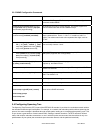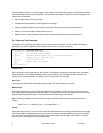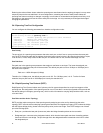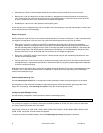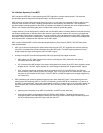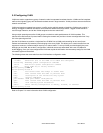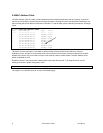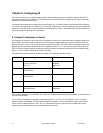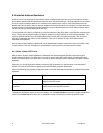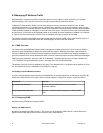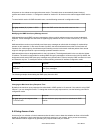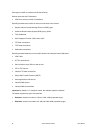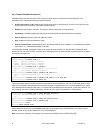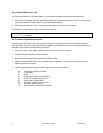
Chapter 6: Configuring IP
The Internet Protocol (IP) is a packet-based protocol used to exchange data over computer networks. All other IP
protocols are built on the foundation. IP is a network-layer protocol that contains addressing and control information
that allows data packets to be routed.
This section describes how to configure the Internet Protocol (IP). A number of tasks are associated with configuring
IP. A basic and required task for configuring IP is to assign IP addresses to network interfaces. Doing so enables the
interfaces and allows communication with hosts on those interfaces using IP. Associated with this task are decisions
about subnetting and masking the IP addresses.
6.1 Assign IP Addresses to Switch
An IP address is a location to and from which IP datagrams can be sent. IP addresses were traditionally divided into
three classes. The Class A Internet address format allocated the highest eight bits to the network field and set the
highest-order bit to 0 (zero). The remaining 24 bits formed the host field. The Class B Internet address allocated the
highest 16 bits to the network field and set the two highest-order bits to 1, 0. The remaining 16 bits formed the host
field. The Class C Internet address allocated the highest 24 bits to the network field and set the three highest-order
bits to 1,1,0. The remaining eight bits formed the host field.
The table below lists the traditional classes and ranges of IP addresses and their status.
Class Address or Range Status
A 0.0.0.0
1.0.0.0 to 126.0.0.0
127.0.0.0
Reserved
Available
Reserved
B 128.0.0.0 to 191.0.0.0
255.255.255.0
Available
C 192.0.0.0 to
223.255.255.0
Available
D 224.0.0.0 to 239.255.255.255 Multicast group addresses
E 240.0.0.0 to 255.255.255.254
255.255.255.255
Reserved
Broadcast
When multiple networks are connected to the Internet the traditional classified addressing scheme could cause you to
run out of IP addresses.
The usual way of assigning IP addresses uses the prefixes of 8, 16, or 24 bits. Using prefixes of 13 to 27 bits an
address includes the standard 32-bit IP address and adds information on how many bits are used for the network
prefix. In the IP address 206.203.1.35/27, the “/27” indicates that the first 27 bits are used to identify the unique
network, and the remaining bits are used to identify the specific host.
54 Asante IntraCore IC36240 User’s Manual



